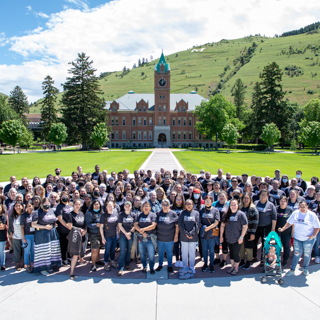90-min Sessions
CoLang 2022 registered participants can sign up for one of the special sessions scheduled on Friday (6/17) afternoon.
Community Archives
Presenters: Susan Gehr & Audra Vincent
Designing Collaborations Between Large and Small Partners
While not all language projects collaborate with large institutions, some communities decide to partner with this type of external organization to support language projects. The connections between communities and research entities can provide lasting positive impacts. However, these partners often have differing values, motivations, and processes to bring an idea to life. Communities and institutional partners have a lot to discuss as they transfer personal connections into durable and empathetic project plans.
This talk helps community leaders, institutional partners, and students understand things that need to be discussed between large and small projects before they partner. The discussion will introduce the large system aspects of compliance, administration, and legal boundaries of collaboration, and small interpersonal aspects of permissions, lifelong relationships, and areas of community sensitivity.
Participants will leave with a better understanding of institutional systems and community concerns, and a list of questions to help them navigate project discussions with various size partners. This step between ethics and project planning will equip participants with a list of questions they can use to engage in pragmatic project design and management that meets community needs and institutional compliance.
Presenter: Hali Dardar
Experiential TBLT Session
TBLT is “Task-based Language Teaching.” When you carry out the tasks in this session, you will be interacting with others. The interactions are experienced differently by each of us. After a task, you will have an opportunity to share reflections of many different sorts. Some of your reflections might even address the following questions:
- How did you personally experience the task—was it visceral or embodied; were you centered and mindful; did the task lead to deep learning or not?
- How and why might or might not you want to apply a similar task in a language reclamation or revitalization classroom and if so, how would you change the task?
Agenda
- Welcome, Intro to TBLT (5 minutes)
- Experiential learning I: A Hebrew task for beginner language learners--in Hebrew + a debrief/discussion in English (30 minutes)
- Experiential learning II: Talmudic Pair Work for intermediate language learners in English + a debrief/discussion in English (30 minutes)
- Brief introduction to one or two more TBLT tasks (10 minutes)
- TBLT assessment discussion (10 minutes)
- Goodbyes and written feedback (5 minutes)
Presenter: Ari Sherris
Language Documentation with Speech Recognition
How much time do you spend transcribing recordings? This is one of the main bottlenecks in our work to document the language and create books and other teaching materials. In this session we will study the workflow to incorporate deep learning and speech recognition into your language documentation process, and we will go over the steps needed to prepare your data for this process. We will also provide you with example computer code that you can modify to begin the process with your language. Work by Rolando Coto (Dartmouth College) and Sally Akevai Nicholas (Massey University; member of the Cook Islands Maori community).
Facilitator: Rolando Coto-Solano
Practical A.I. for Language Maintenance
Artificial intelligence (AI) applications create new modes of interactive language curricula. Unfortunately, AI has been beyond the reach of low resource language communities. This workshop will introduce accessible AI technologies through a mobile Hawaiian image recognition application called Hua Ki'i and demonstrate their potential for language maintenance.
Hua Ki'i, developed by a multi-tribal group of Indigenous engineers, scholars, and language activists using free and open source libraries, is a mobile app that allows the user to snap a photo of an object and learn the Hawaiian word for that object. For example, when a user points the camera at a dog the app shows the word "ʻīlio." The application was built to be extensible and can support multiple languages using a dictionary file mapping a small Hawaiian dictionary to the list of recognizable objects. By using image recognition and implementing iconography for instructions we avoid using the English language in the user interface. This allows the user to stay immersed in their language learning efforts without being forced to translate from and type in English.
After a basic introduction to AI, workshop participants will be given a live demo of the app and hands-on instructions of how to modify the open source code for themselves. Enabling the app for a new language simply requires the creation of a new dictionary file. This will be followed by a discussion of the opportunities and practical conceptual problems of using AI intended for dominant western cultures and what can be done to make this technology truly Indigenous. The workshop will also include a discussion on the importance of data sovereignty.
Participants will be expected to be technologically literate (being comfortable using a smartphone; being able to text/chat on the phone), no machine learning experience required.
Facilitators: Michael Running Wolf & Caroline Running Wolf
